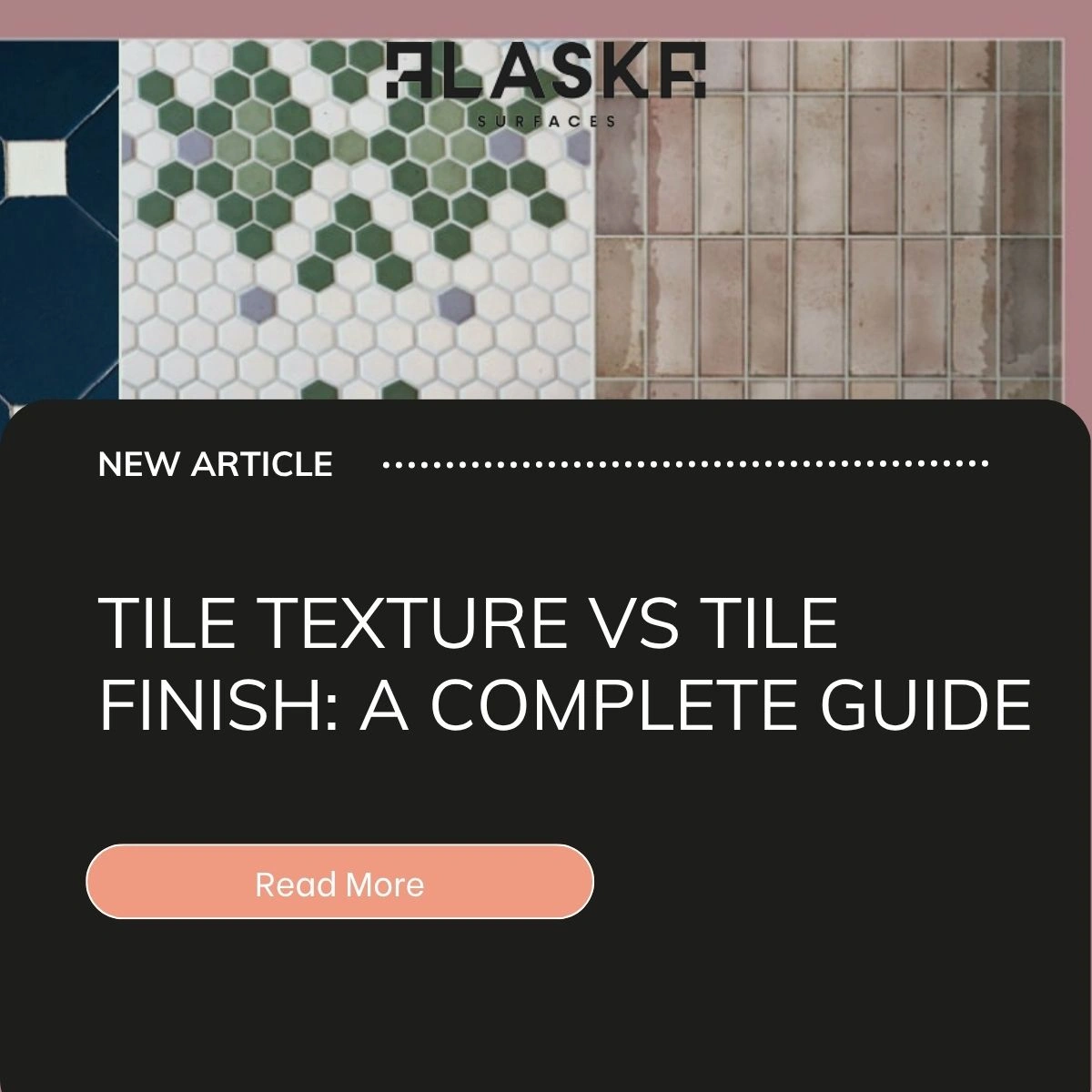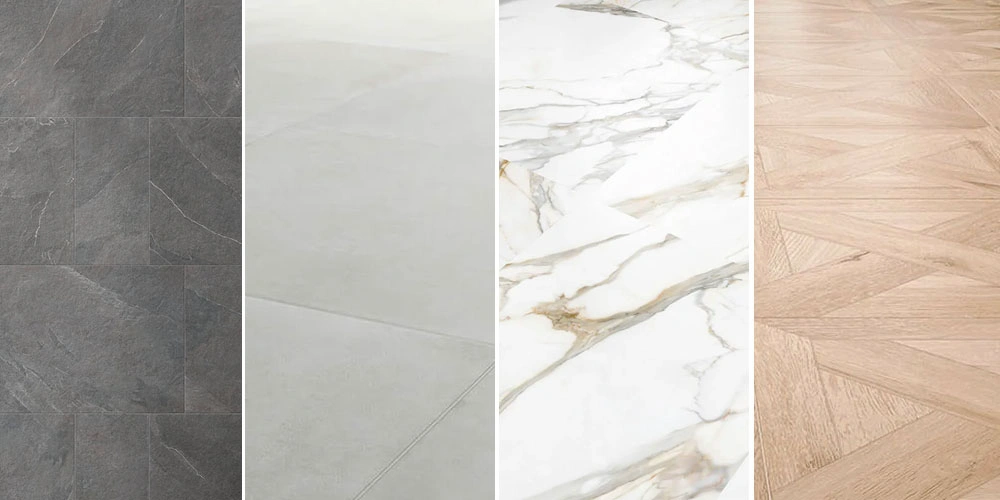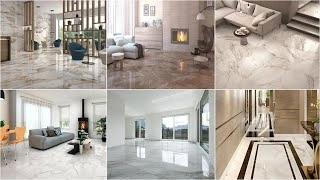7 July, 2025

What is Tile Texture?
Tile texture is the actual textural feel of a tile, smooth, ridged, grainy, embossed. Consider a wood texture tile that resembles the grain of the timber or a marble tile texture that imitates the soft veining of the stone. The texture provides depth to a particular space and has both decorative and functional applications. Textured floor tiles are also useful in slippery locations such as bathrooms, kitchens or around swimming pool decks. These floor tiles texture is not only very beautiful but it is also a safer option.

Key Points:
-
Texture gives depth and personality, making spaces look dynamic.
-
It enhances safety, in particular wet areas, to offer slip and grip.
-
Typical textures are smooth, sugar, and very textured surfaces to resemble a natural material, such as stone or wood.
What is Tile Finish?
Tile finish The appearance of tile sheen or reflectivity. It may be glossy and very reflective, or matte and low luster. Surface tile finishes can affect the feel of a room, depending on the type of tile finish used, tile can brighten or soften a room. In example, glossy tiles reflect more light and introduce a sense of luxury but can be smudgy and prone to watermarks. Conversely, matt finish tiles are much less dramatic in looks and very suitable when slip resistance is required but not the ruggedness of textured tiles.

Key Points:
-
Finish affects how much light a tile reflects, influencing the perceived size and brightness of a room.
-
It impacts cleaning and maintenance; for example, glossy tiles show smudges more readily, while matte and textured finishes hide them.
-
The right finish enhances both aesthetics and practical performance in specific environments.
What’s the Difference Between Tile Texture and Tile Finish?
While tile texture is about feel and surface pattern, tile finish focuses on the shine or gloss level. Here’s a clear comparison:
| Feature | Tile Texture | Tile Finish |
| Definition | Surface feel (rough, smooth, etc.) | Surface sheen (glossy, matte, etc.) |
| Purpose | Grip, depth, design aesthetics | Visual appeal, light reflection |
| Functionality | Improves slip resistance | Enhances style and brightness |
| Common Types | Wood grain, stone, ridged | Glossy, Matte, Satin, Polished |
| Best For | Floors, outdoor use, wet zones | Walls, low-traffic areas, décor zones |
Types of Tile Textures and Finishes
Popular Tile Textures
-
Smooth: Sleek and modern, ideal for contemporary spaces.
-
Textured: Mimics natural materials, offers slip resistance, and adds rustic charm.
-
Sugar: Granular, sparkling surface that’s both tactile and visually unique.
-
Woodgrain/Stone: Replicates the look and feel of natural wood or stone.
Common Tile Finishes
-
Glossy/Polished: Highly reflective, adds luxury and brightness, best for walls or low-traffic floors.
-
Matte: Non-reflective, understated elegance, hides smudges, ideal for high-traffic or wet areas.
-
Satin/Semi-Polished: Balanced sheen, soft look, suitable for both modern and classic interiors.
-
Honed: Smooth with a soft, low-luster finish, often used for stone tiles.
-
Lapato (semi-polished): Subtle gloss, often on textured tiles.
Where Should You Use Textured vs Finished Tiles?

Choosing between textured and finished tiles comes down to the function and design of your space. Each type offers unique benefits based on the environment in which it's installed.
Best Areas to Use Textured Tiles:
Textured tiles are ideal for spaces where grip and traction are important. Their uneven surface provides natural slip resistance, making them a safe and stylish choice for:
-
Bathroom floors – Prevents slips in wet conditions
-
Outdoor patios & balconies – Handles weather exposure and foot traffic
-
Pool decks – Enhances grip in consistently wet areas
-
Entryways & mudrooms – Adds durability and traction for high-traffic zones
-
Industrial or commercial kitchens – Increases safety where spills are common
Textured tiles also bring a more natural and earthy look, adding depth and visual interest to rustic or nature-inspired interiors.
Best Areas to Use Finished Tiles:
Finished tiles—especially those with glossy or semi-gloss coatings—are designed for visual appeal and ease of cleaning. These are perfect for:
-
Wall cladding – In bathrooms, kitchens, or feature walls for a sleek finish
-
Kitchen backsplashes – Easy to wipe and adds a reflective touch
-
Living room or hallway floors (low traffic) – Gloss or satin finishes amplify light and elegance
-
Hotel lobbies or showrooms – High-end aesthetics for luxury interiors
Polished or matte-finish tiles suit modern, minimalist or contemporary designs, giving interiors a clean and refined feel.
Why Does Tile Texture Matter?
Tile texture cannot be discussed as stylish only, it is quite vital to safety, comfort. Textured tiles, on the other hand, stop slipping as well as enhance traction in high-moisture or high-traffic regions. The use of textured surfaces such as textured bathroom tiles and textured wall tiles also present a different identity to interiors by introducing patterned and finish recognizing nature.
Why Is Tile Finish Important?
The type of finish will make a difference in the appearance, as well as life span, and maintenance of the tiles. As another example, glossy finishes can lighten up small rooms but need more regular cleaning, whereas matte and textured surfaces are more tolerant in larger families.
Choose the Right Tile Finish & Texture
Conclusion
Understanding the difference between tile texture and tile finish is key to selecting the right tile for each space. While texture offers grip and visual depth, finish impacts light and style. Whether you’re designing a minimalist bathroom, a rustic kitchen, or a luxury living room, choosing the right combination will enhance both the safety and beauty of your interiors.
For expert recommendations and a wide range of tile textures and finishes—from finish tiles to tile texture options—explore premium collections at Alaska Surfaces.
People Also Ask
1. What is the difference between tile texture and tile finish?
Tile texture is the physical feel of the tile’s surface, while tile finish refers to the surface treatment that affects its sheen and reflectivity. Both play vital roles in the tile’s appearance and performance.
2. Which tile finish is best for bathrooms?
Matt finish tiles or textured bathroom tiles are ideal due to their enhanced slip resistance and ability to hide water spots or soap marks.
3. Are textured tiles harder to clean?
Textured tiles can trap dirt more easily than smooth tiles, so they may require more attention during cleaning. However, they excel at hiding scratches and stains, making them ideal for high-traffic or wet areas.
4. Can you use glossy tiles on floors?
Glossy tiles can be used on floors in low-traffic or dry areas but are generally not recommended for wet spaces due to their slippery nature.